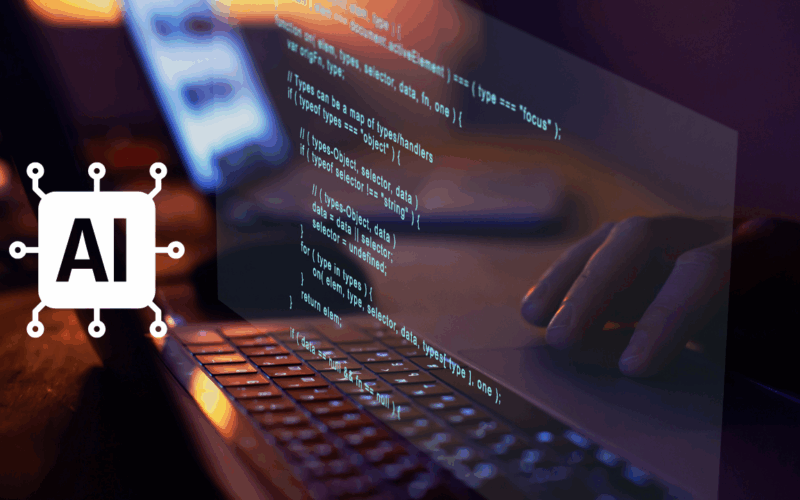Artificial Intelligence (AI) has moved from the realm of research labs into mainstream business, healthcare, education, entertainment, and even personal productivity. At the heart of every AI-powered product or service is programming. So, writing the code that trains, runs, and integrates AI models into real-world applications. In this AI programming comprehensive and complete guide, you’ll learn languages, tools, and best practices.
If you’ve ever wondered how AI programming works, what languages and tools professionals use, and how to approach it in a way that ensures both quality and scalability, this guide will give you a clear roadmap. Whether you’re a beginner dipping your toes into AI development or a seasoned programmer looking to specialize, understanding the core building blocks will help you navigate this fast-growing field.
What is AI Programming?
AI programming is the process of developing algorithms and models that enable machines to simulate human intelligence. This can include learning from data, recognizing patterns, making predictions, and even understanding natural language. AI programming often combines computer science, mathematics, and domain expertise to create systems capable of decision-making and problem-solving without explicit step-by-step instructions for every scenario.
A modern AI project can range from training a small chatbot to building large-scale machine learning systems capable of processing millions of data points in real time.
Popular Languages for AI Programming
While you can technically implement AI algorithms in almost any language, some stand out because of their extensive libraries, community support, and performance in handling AI-related tasks. AI programming complete guide to learn languages, tools, and best practices.
| Language | Strengths | Best For |
|---|---|---|
| Python | Large AI/ML ecosystem, easy syntax | Beginners, rapid prototyping, deep learning |
| R | Strong in statistics and data visualization | Data-heavy AI projects, research |
| Java | High performance, cross-platform support | Enterprise-level AI applications |
| Julia | Fast execution, great for numerical computing | High-performance AI and mathematical models |
| C++ | Speed and control over resources | Real-time AI, embedded systems |
| JavaScript | AI in web applications | Client-side AI and interactive UIs |
| Go | Scalable, efficient concurrency | Distributed AI systems |
Python dominates the AI landscape because it strikes a balance between simplicity and power. It has libraries like TensorFlow, PyTorch, scikit-learn, and spaCy, which reduce the time needed to implement AI solutions. However, performance-critical components are often implemented in C++ or Java to handle heavy computation.
Essential Tools and Frameworks
AI programming doesn’t happen in a vacuum. It requires frameworks, libraries, and environments that make model training, testing, and deployment easier. Some of the most widely used include:
TensorFlow
Developed by Google, TensorFlow is a powerful open-source platform for machine learning. It supports deep learning, reinforcement learning, and even mobile AI deployments.
PyTorch AI Programming Languages Guide
Popular among researchers and production developers alike, PyTorch offers dynamic computation graphs, making experimentation faster and more intuitive.
scikit-learn
A go-to library for traditional machine learning algorithms like regression, classification, and clustering. It’s lightweight and integrates well with other Python tools.
Keras
A high-level API for building and training neural networks quickly, often used on top of TensorFlow for simplicity.
Hugging Face Transformers
Specialized in Natural Language Processing (NLP), this library provides pre-trained models for tasks like text generation, translation, and sentiment analysis.
OpenCV AI Programming Best Practices
An open-source library for computer vision, great for image and video analysis in AI projects.
Jupyter Notebook
An interactive coding environment ideal for prototyping and visualizing AI workflows.
Best Practices for AI Programming
AI programming is more than writing code. It’s about making sure the models you build are effective, ethical, and maintainable. Following best practices can help ensure long-term success.
1. Start with a Clear Problem Definition
Don’t start coding until you’ve defined the problem you’re solving. AI is powerful, but without a specific use case and measurable objectives, your project can lose focus.
2. Gather Quality Data
AI models are only as good as the data they’re trained on. Invest time in cleaning, labeling, and validating your datasets. Poor-quality data leads to poor predictions.
3. Choose the Right Model for the Task
A complex neural network isn’t always the answer. Sometimes simpler models like decision trees or logistic regression outperform deep learning for smaller datasets.
4. Focus on Explainability AI Programming Tools
Users and stakeholders need to trust AI outputs. Using interpretable models. In addition, tools like SHAP values can help explain how decisions are made.
5. Optimize for Performance and Scalability
AI models should work efficiently in real-world environments. Use techniques like quantization, pruning, and batching to make them faster and lighter.
6. Test Extensively
Beyond accuracy metrics, test how your model behaves with edge cases and unexpected inputs.
7. Keep Ethics in Mind
Avoid biases in training data, and consider the societal impact of deploying AI systems. Fairness, privacy, and transparency should be part of the design process.
8. Document Everything
From your data sources to your hyperparameters. So, good documentation helps with reproducibility and future updates.
Common AI Programming Workflows
A typical AI programming project involves several stages:
- Data Collection: Gathering relevant datasets from APIs, public repositories, or company data.
- Data Preprocessing: Cleaning, transforming. So, formatting data for model consumption.
- Model Selection: Choosing the architecture best suited to the problem.
- Training: Feeding data to the model and adjusting weights to minimize error.
- Evaluation: Measuring accuracy, precision, recall, or other relevant metrics.
- Deployment: Integrating the trained model into applications or services.
- Monitoring: Tracking performance and retraining when necessary.
In production environments, these stages often loop back as data changes or as performance degrades over time.
Trends Shaping AI Programming
AI programming is evolving quickly. Some trends influencing the field include:
Low-Code and No-Code AI
Platforms like Google AutoML and Lobe let users build models with minimal coding. While they can’t replace custom AI for complex tasks, they lower the barrier to entry.
Edge AI
Running AI models on devices rather than in the cloud reduces latency and enhances privacy. Frameworks like TensorFlow Lite and ONNX Runtime make this more accessible.
Responsible AI Development
Regulations and public awareness are pushing developers toward ethical AI. So, with transparency and fairness becoming industry standards.
Multi-Modal AI
Combining text, image, audio, and other data types in a single model to improve understanding and performance.
AI in Software Development
AI-assisted coding tools like GitHub Copilot are changing how developers write and debug code.
How to Get Started with AI Programming
If you’re new to AI programming, here’s a straightforward approach:
- Learn Python since it’s the most accessible and widely used language in AI.
- Master the Basics of Machine Learning through online courses and tutorials.
- Work with Public Datasets like those on Kaggle to practice building models.
- Experiment with Frameworks such as TensorFlow or PyTorch for hands-on experience.
- Build Small Projects to apply your skills. So, chatbots, recommendation systems, or image classifiers are great starting points.
- Stay Updated with AI research and industry news to keep your skills relevant.
The AI programming community is open and collaborative, so sharing your work on platforms like GitHub can lead to feedback and new opportunities.
Final Thoughts
AI programming is one of the most exciting and impactful areas of technology today. With the right languages, tools, and best practices, you can build systems that analyze data, understand language, recognize images, and make predictions. So, helping businesses and individuals solve problems more effectively.
The key is to start small, keep learning, and remember that AI is as much about thoughtful design as it is about powerful algorithms. By combining technical skill with ethical awareness, you can create AI applications that are not just functional but also responsible and impactful.








